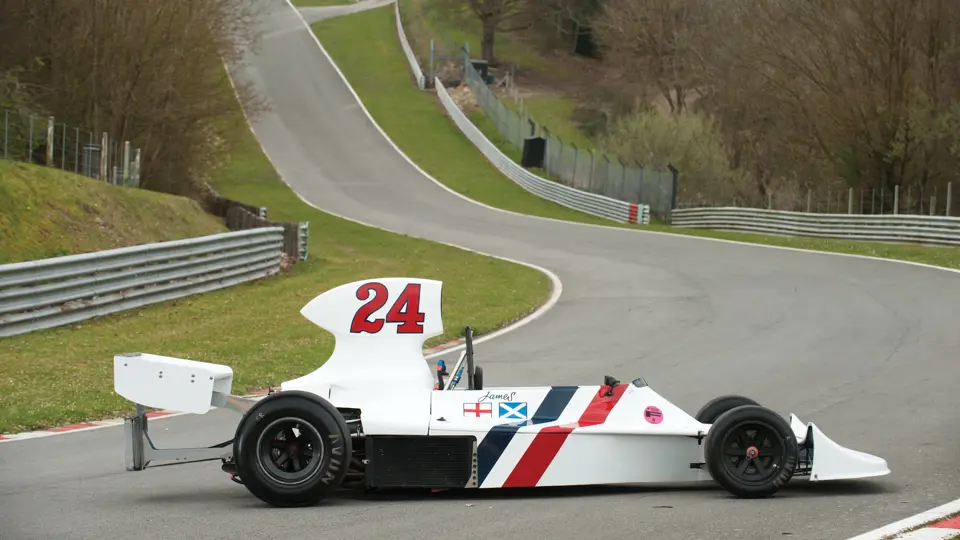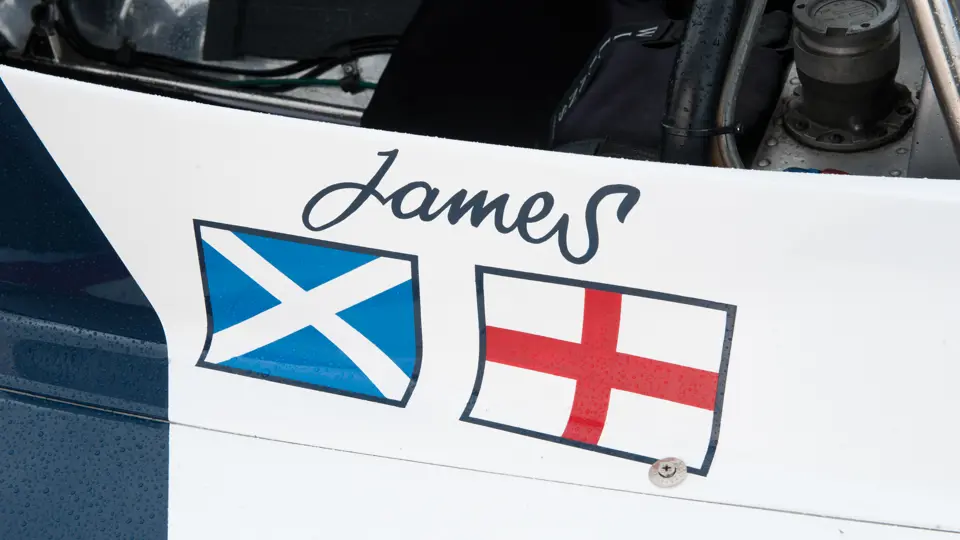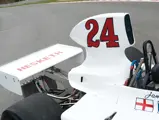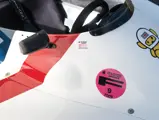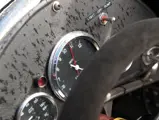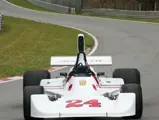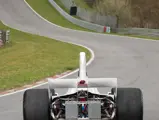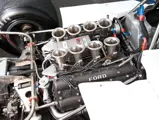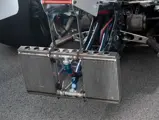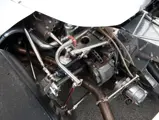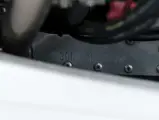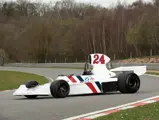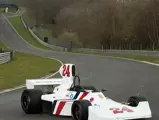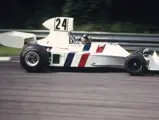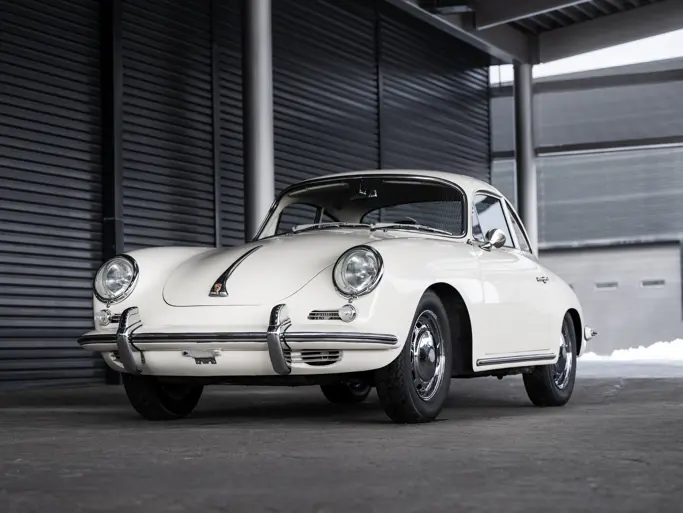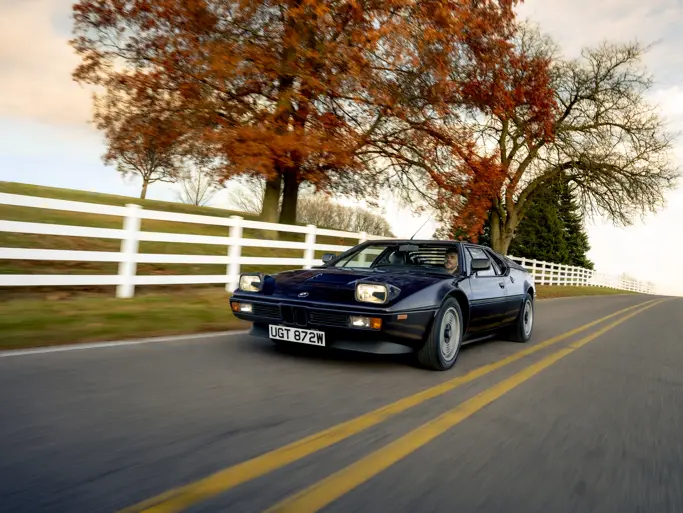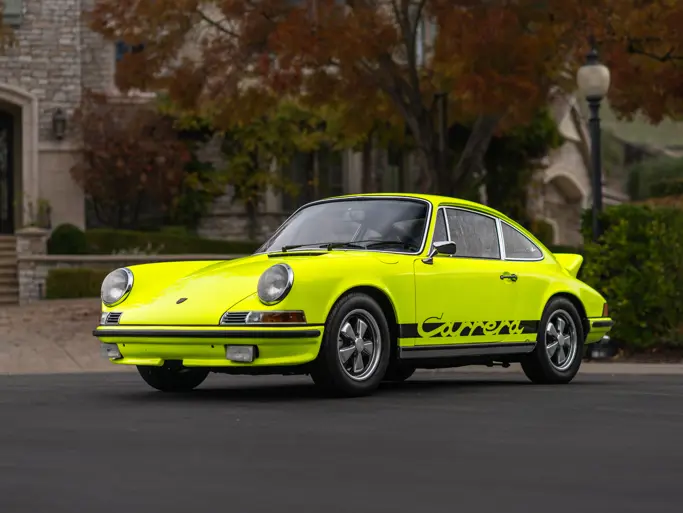
1974 Hesketh 308 Formula One
{{lr.item.text}}
€280,000 EUR | Sold
{{bidding.lot.reserveStatusFormatted}}
- The first Hesketh Formula One car; one of only three built in the 308 and 308 B series
- Driven by Formula One champions James Hunt and Alan Jones
- Famous for Hunt’s late-race pass at the 1974 Silverstone International Trophy Race
- Recent complete and correct restoration; successful historic racing career
- Perfect for the Monaco Historic Grand Prix and the FIA Masters Historic Championships
- La première Hesketh de Formule 1; un des trois exemplaires des séries 308 et 308 B
- Pilotée par les Champions du Monde James Hunt et Alan Jones
- Célèbre pour le dépassement de fin de course de Hunt, lors de l'International Trophy de Silverstone
- Restauration récente, complète et correcte; beau palmarès historique
- Parfaite pour le Grand Prix Historique de Monaco et le championnat FIA Masters Historic
485 bhp, 2,993 cc DOHC dry-sump Cosworth DFV 90-degree V-8 engine with Lucas-metered fuel injection, Hewland FGA/400 five-speed manual transaxle, rack-and-pinion steering, front and rear wishbone independent suspension with coil springs, telescopic dampers, and anti-roll bars, and four-wheel Lockheed four-piston ventilated disc brakes. Weight: 590 kg Wheelbase: 2,570 mm
Moteur V-8 Cosworth DFV à 90°, 2 993 cm3, 485 ch, 2 ACT par banc, carter sec, injection Lucas, boîte manuelle Hewland FGA/400 cinq rapports transaxle, direction à crémaillère, suspension avant et arrière indépendante avec triangles, ressorts hélicoïdaux, amortisseurs télescopiques et barres antiroulis, freins Lockheed à disques ventilés et étriers quatre pistons sur les quatre roues. Poids: 590 kg. Empattement: 2 570mm.
Lord Hesketh’s first grand prix racing car was designed and engineered in-house by Harvey “Doc” Postlewaite (the team previously ran a 1973 March 731). Their new 308, which referred to the three-litre, eight-cylinder DFV engine that powered the car, was assembled by B.S. Fabrication Ltd. in Luton. When James Hunt first laid eyes on the car, he pronounced it simply “beautiful”. He was likewise impressed by the roomy cockpit, which had been tailored to fit his relatively large form.
The 1974 season began with the team racing the previous year’s March 731. At the Brazilian Grand Prix, Hunt finished 9th overall in the old car. After that race, several teams stayed on at the Interlagos circuit to continue testing. As Hunt prepared to try out his new Hesketh 308-1, the rival teams, with stop-watches in hand, looked on. Being competitive and faster than the March team cars was one thing, but as the Formula One pundits opined, “Wait until Hesketh tries building his own car. Then he’ll find out how difficult this business is!”
After a few warm-up laps and some adjustments, Hunt was ready for a “lap in anger”. To everyone’s surprise, that famous lap proved to be a second faster than Emerson Fittipaldi’s pole-qualifying time in the McLaren, and a full four seconds better than Hunt’s own qualifying time in the old March! For Doc Postlewaite, this immediate display of speed, in front of many of their disbelieving rivals, was one of Hesketh Racing’s “most satisfying highlights”.
Chassis 308-1’s first real test came at the Race of Champions at Brand’s Hatch. Here, James Hunt would qualify on the pole, but after contact with another car caused a loss of front bodywork, Hunt was forced to eventually retire due to handling problems. Hunt’s first race win in this car came at the Silverstone International Trophy race, beating Ronnie Peterson’s championship Lotus with a daring late-race pass.
Pete Lyons, in his 1975 book Formula One, The Drivers, aptly wrote: “Carefully weighing up the differing performance characteristics of the other car, he decided at which point in the circuit he should make his move—selecting Woodcote Corner, one of the most spectacularly fast corners in the whole GP schedule, a frightening matter of feathering the throttle and catching lurid slides at 160 mph—and by chance the most public corner at Silverstone! The way James threw his Hesketh beneath Peterson’s Lotus and powered through to take the lead and win the race became etched on that imaginary but very real bronze tablet that every British enthusiast keeps near his heart. It was a magnificent moment!”
By mid-1975, chassis 308-1 had been sold to Harvey Stiller and his associates for Alan Jones to drive. In 1975, driver/journalist Harald Ertl was at the wheel. In 1988, P. Senkowsky bought the car from Ertl’s partner/ technician Gustave Hoeker. Various modifications, including ones performed on the radiator and suspension and certainly various body liveries, had by this time taken place.
To his credit, the fifth owner undertook a full restoration back to 1974 specifications after learning of its history. He was aided in this task by Bob Sparshott, of B.S. Fabrication Ltd., who was one of the original builders of this car’s tub and suspension. Lord Hesketh himself helped the cause by supplying various details. In June 2006, chassis 308-1 was sold to the current owner, who has successfully competed, after a second renovation, in historic grand prix events at Road America, Las Vegas, Sonoma, Circuit Gilles Villeneuve, Silverstone, Nürburgring, and here at Monaco.
Chassis 308-1 will also be accompanied by its FIA Historic Vehicle Identity Form and ACCUS/FIA U.S.A. Technical Passport, as well as an extensive offering of spares. Please consult an RM specialist for additional detail.
La première monoplace de Grand Prix de Lord Hesketh avait été conçue et réalisée en interne par Harvey « Doc » Postlewaite (l'équipe faisait auparavant courir une March 731 de 1973). La nouvelle 308, chiffre faisant référence au V-8 de 3 litres DFV qui équipait la voiture, était assemblée par B.S. Fabrication Ltd., à Luton. Quand Hunt a posé les yeux sur la voiture, il a simplement prononcé le mot « superbe ». Il a été également impressionné par l'habitacle spacieux, étudié pour pouvoir loger son gabarit relativement grand.
La saison 1974 a commencé pour l'équipe avec la March 731 de l'année précédente. Au Grand Prix du Brésil, Hunt finissait neuvième au volant de cette voiture. Après la course, plusieurs écuries sont restées sur le circuit d'Interlagos pour poursuivre leurs essais et, quand Hunt s'est préparé pour essayer la nouvelle Hesketh 308-1, les équipes concurrentes l'ont observé avec attention, chronomètre en main. Etre compétitif et plus rapide que les voitures de l'équipe March était une chose mais, comme l'ont alors affirmé les spécialistes de la Formule 1, « Attendez que Hesketh essaye de fabriquer sa propre voiture. Il va découvrir à quel point cette discipline est difficile ! »
Après quelques tours de chauffe et de réglages, Hunt était prêt pour un tour chronométré. A la surprise de tous, il a réalisé alors un temps inférieur d'une seconde à celui qui avait permis à Emerson Fittipaldi de signer la pole position au volant d'une McLaren, et inférieur de 4 secondes à son propre temps de qualification à bord de la March ! Pour Doc Postlewaite, cette démonstration de force immédiate, devant plusieurs concurrents sceptiques, fut un des moments les plus satisfaisants pour l'équipe Hesketh Racing.
Pour le châssis 308-1, le premier test sérieux a eu lieu lors de la Course des Champions, à Brands Hatch. Hunt s'est qualifié en pole position mais, pendant la course, sa voiture en heurtait une autre, provoquant la perte d'une partie de la carrosserie, à l'avant. Le pilote était donc contraint à l'abandon à cause de problèmes de tenue de route. C'est à Silverstone, pour l'International Trophy, que Hunt signait sa première victoire après avoir réussi, dans le dernier tour, un dépassement audacieux de la Lotus de Ronnie Peterson.
Pete Lyons, dans son ouvrage de 1975, Formula One, The Drivers, a écrit à ce propos : « Évaluant soigneusement les différences de performances entre les deux voitures, il décida de l'endroit du circuit où il devait porter son attaque, et sélectionna le virage de Woodcote—une des courbes rapides les plus spectaculaires de toute la saison de Grand Prix, où il fallait manier l'accélérateur avec délicatesse pour entretenir à 250 km/h une angoissante dérive, devant la plus grosse concentration de public sur le circuit ! La façon avec laquelle Hunt a lancé sa voiture derrière la Lotus de Peterson et a accéléré dans le virage pour prendre la tête et remporter la course restera gravé à jamais dans la mémoire de tous les passionnés qui assistaient à l'épreuve. Un épisode magnifique ! »
Au milieu de la saison 1975, le châssis 308-1 fut vendu à Harvey Stiller et ses associés, pour qu'il soit confié à Alan Jones. En 1975, le pilote/journaliste Harald Ertl était au volant et, en 1988, P. Senkowsky achetait la voiture au partenaire/technicien d'Ertl, Gustave Hoeker. A cette époque, diverses modifications, dont certaines sur la carrosserie et les suspensions, avaient été effectuées, la voiture ayant certainement couru sous différentes livrées.
Après avoir étudié l'histoire de la voiture, le cinquième propriétaire se lançait ensuite dans une restauration complète aux spécifications de 1974. Il était assisté dans sa tâche par Bob Sparshott, de B.S. Fabrication Ltd., qui avait participé à l'époque à la fabrication du châssis et des suspensions de la voiture. Lord Hesketh lui-même contribuait aux travaux en apportant diverses précisions. En juin 2006, le châssis 308-1 était cédé à son propriétaire actuel qui, après une deuxième remise en état, participait avec succès à plusieurs compétitions historiques sur les circuit de Road America, Las Vegas, Sonoma, Gilles Villeneuve, Silverstone, Nürburgring, et ici à Monaco.
Le châssis 308-1 est également accompagné de son Passeport Technique Historique FIA et de l'ACCUS/FIA U.S.A. Technical Passport, de même que d'un lot important de pièces de rechange. Veuillez consulter un spécialiste RM pour tout complément d'information.




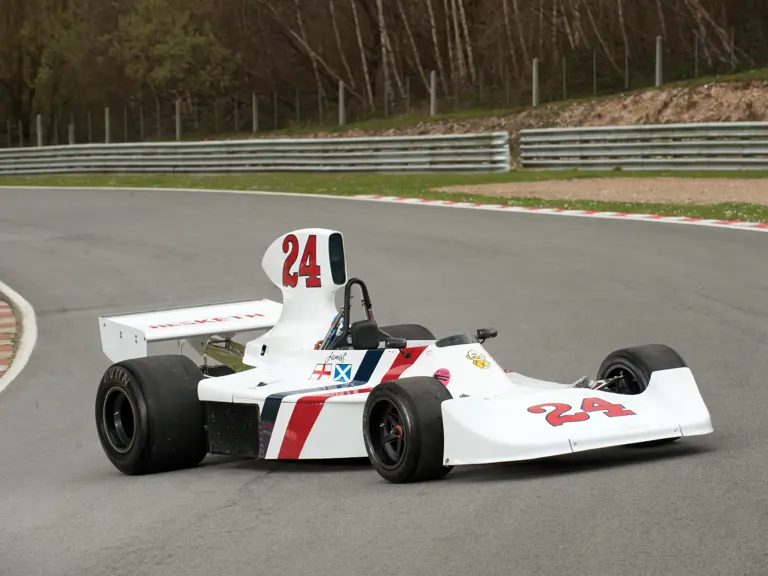
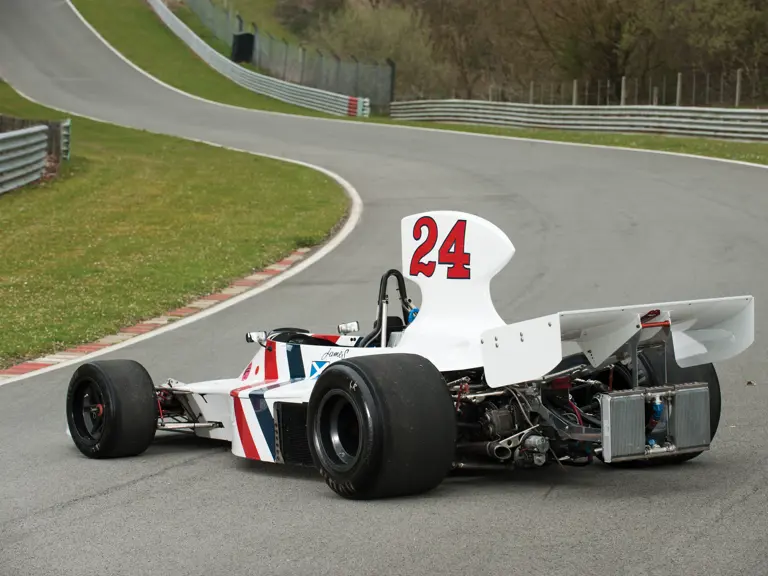
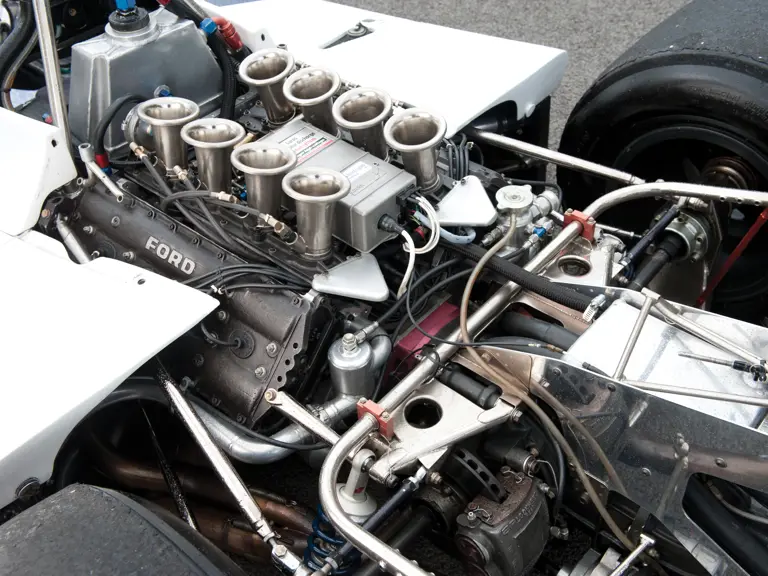
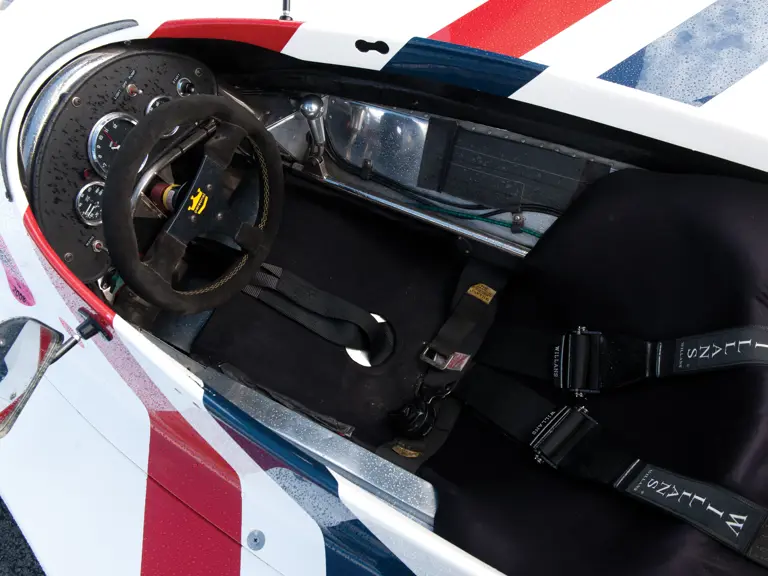
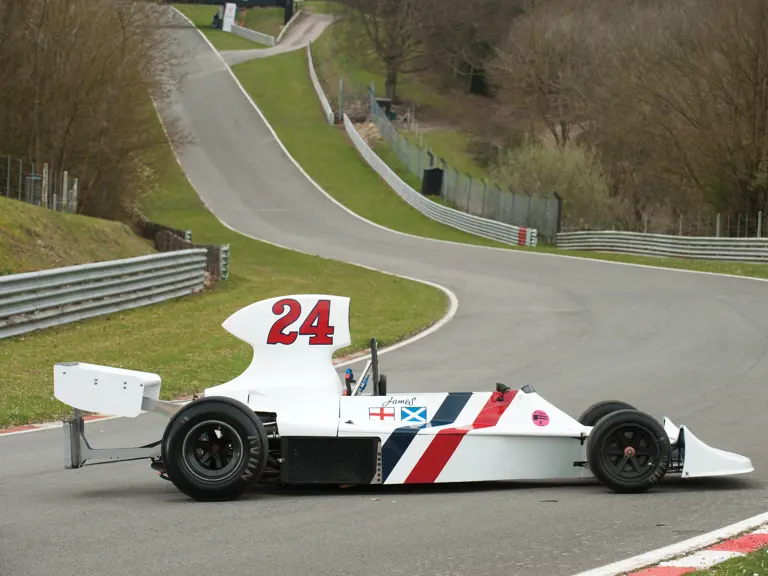
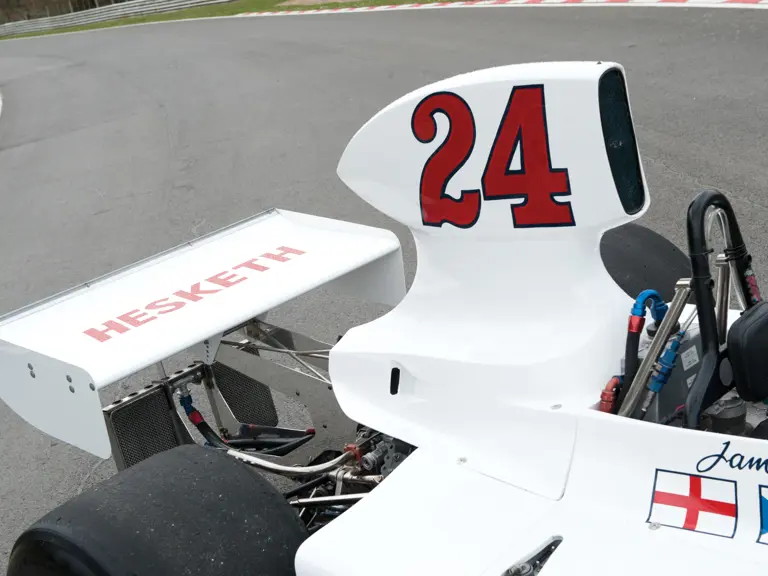
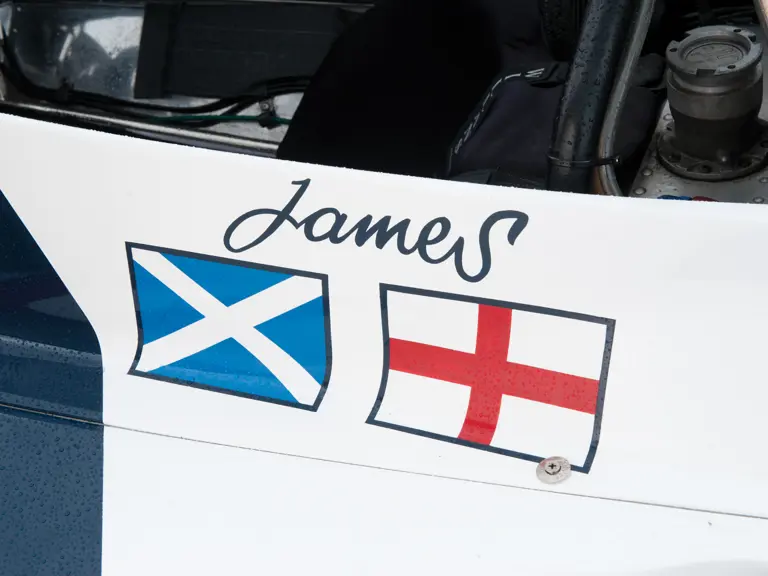

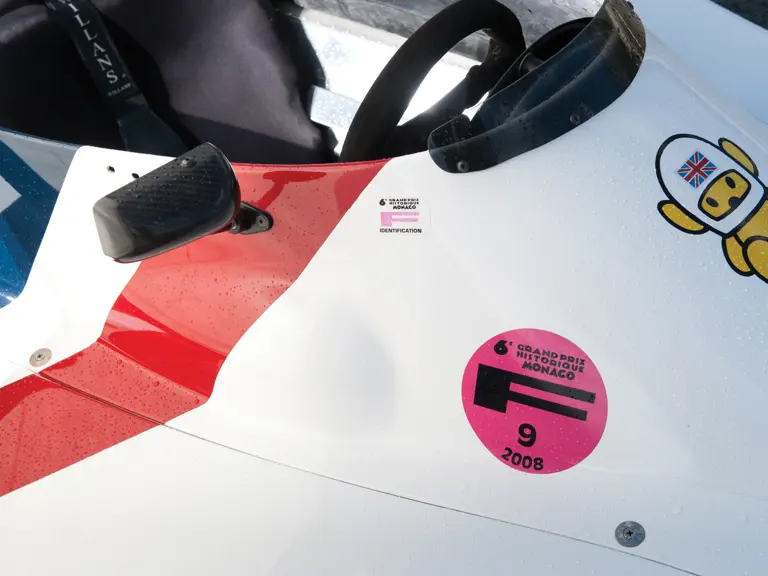

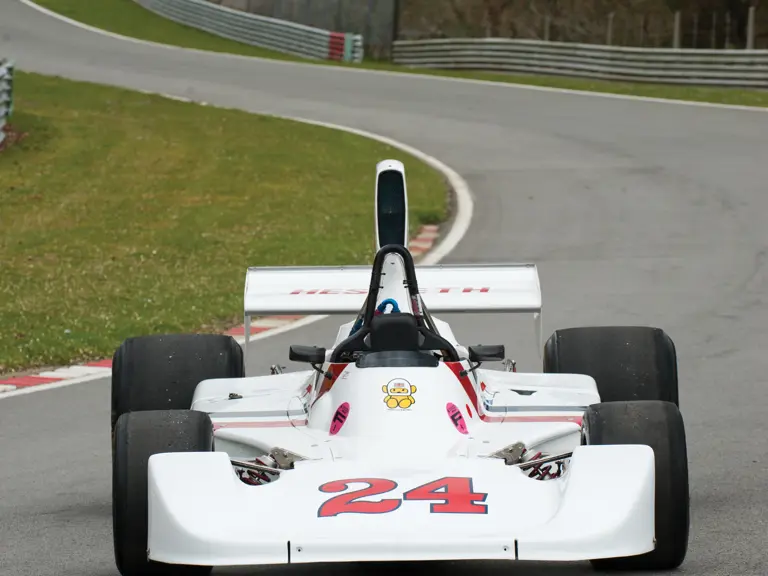

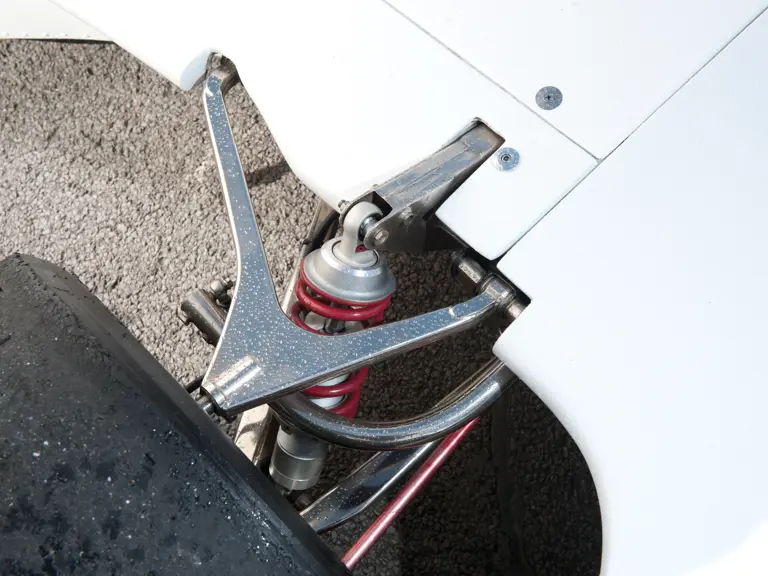
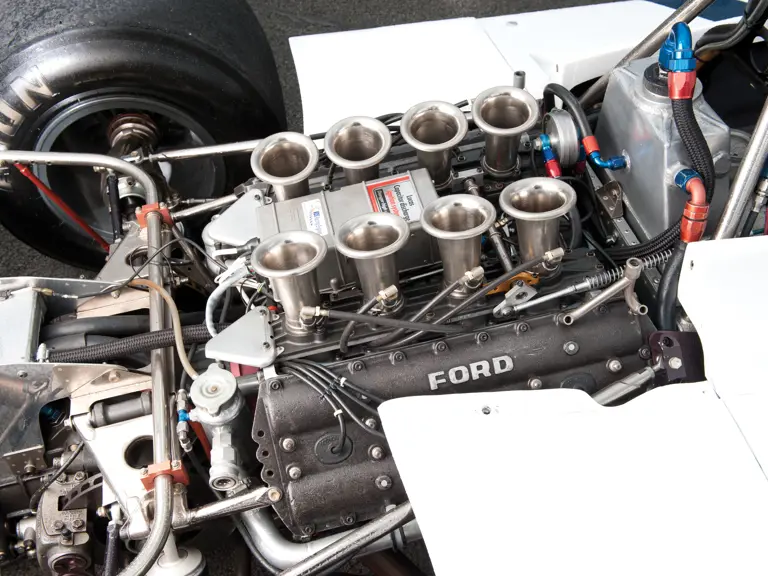
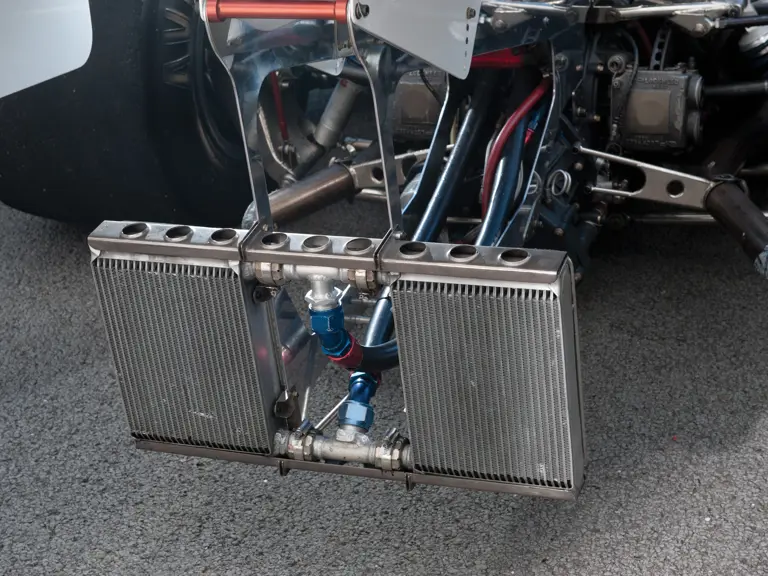
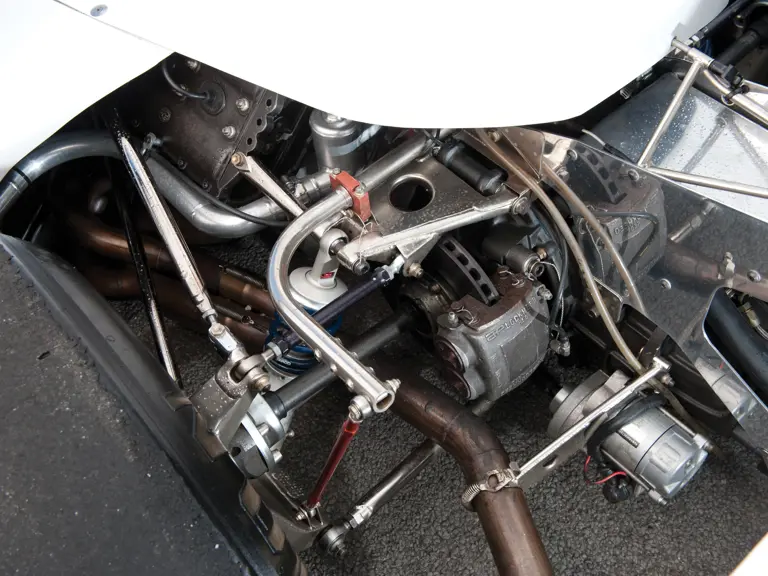
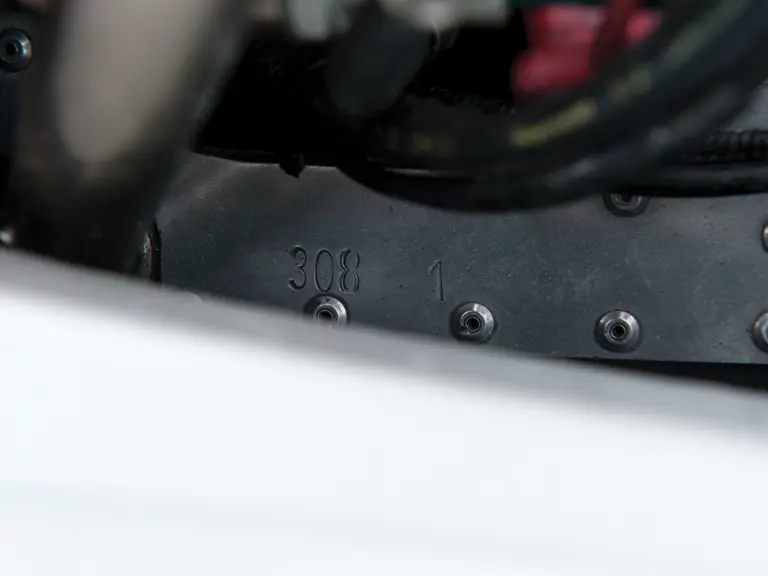
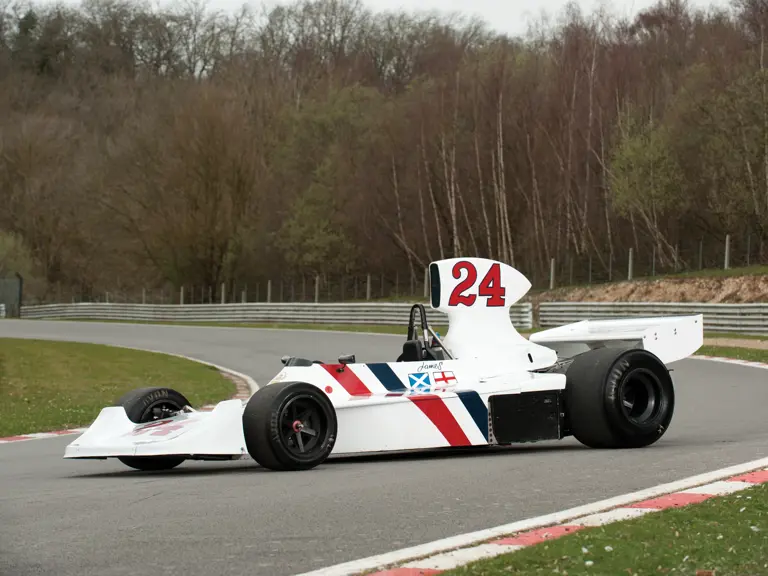

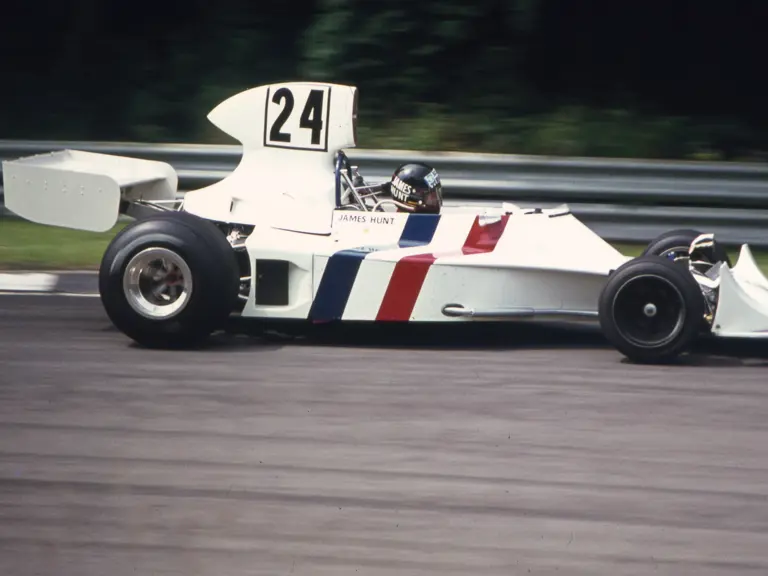
 | Monte Carlo, Monaco
| Monte Carlo, Monaco
